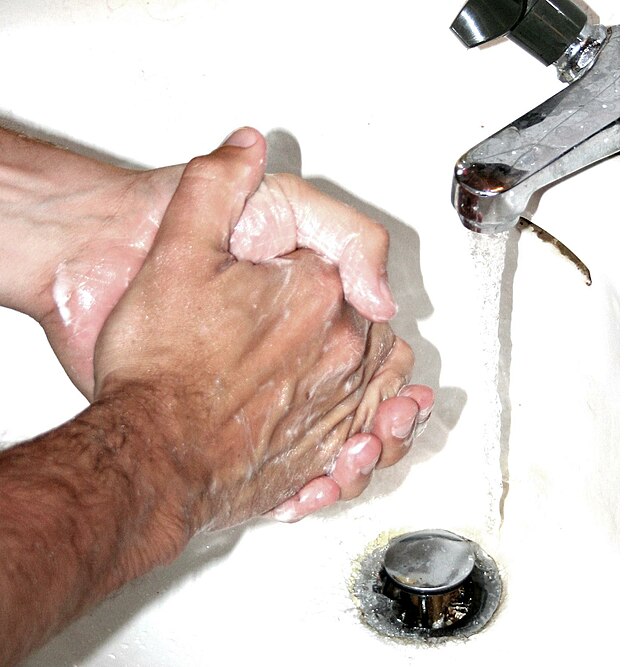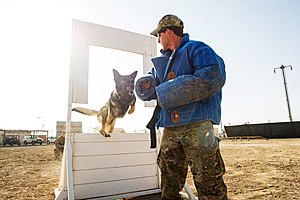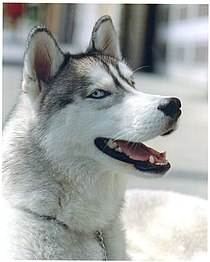學習
From Wikipedia, the free encyclopedia
學習嘅現象無所不在:人喺未出世之前,神經系統經已發育得相當完善,會喺度同環境互動而學習[6],呢個過程仲會一路維持到死亡為止,例如臊孲子會學識認照顧者把聲同樣,等到再大少少會學行路同講嘢,細路仔係噉由佢周圍同身邊嘅大人嗰度學習,而大人都識得學嘢;就算係啲好簡單嘅動物都做到單純行為式學習,而喺好似人等智能高嘅動物當中仲可以睇到以玩呢啲複雜行為進行嘅學習[7][8]同埋對抽象概念嘅理解[9];學習可以有意識做,又可以冇意識做,後者嘅例子可以舉返頭先俾個煮食爐焫親一次,下次知道唔可以掂個爐-呢種學習個人唔使特登去諗「點解隻手掂到個爐會痛」都會自然明白又學得到唔再犯。另一方面,學習嘅機制喺某啲情況之下亦都可以造成一啲唔好嘅效果,例如習得性失助(learned helplessness)嘅現象噉,就涉及一隻動物反覆經歷過避無可避嘅痛苦之後學識「反抗冇用」而變到冇嗮心機做嘢[10][11]-所以對學習嘅研究仲要諗點樣確保學習嘅機制唔會出現反效果[12]。
學習過程喺認知科學同教育學等領域上都重要嘅研究課題,而佢哋嘅研究對社會來講好有應用價值[13][14]。例如心理學上對記憶功能嘅研究就會有助教育家設計新嘅記憶方法,幫學生手記住學過嘅內容[15]。
詞源
喺漢文入面,「學習」呢個詞最早可以追溯到孔子喺《論語》當中講嘅嘢:『學而時習之,不亦悅乎?』呢句嘢係文言,意思係「學咗嘢之後時不時反覆溫書,唔係一件好愉快嘅事咩?」[16]按照孔子同第啲古代中國教育家嘅睇法,「學習」係一個複合詞言:「學」係指透過用眼耳口鼻接觸世界萬物,由自身以外嘅地方獲得資訊,以及了解書本上嘅知識同埋老師教授嘅技能,有時仲可以包含咗自己本身嘅思考;而「習」係指鞏固知識技能嘅行為,例如係學功夫學咗一個招式之後反覆噉練習嚟鞏固自身嘅知識。「學」偏重思想意識嘅理論領域,而「習」偏重行動實習方面嘅實踐-學屬知,習屬行,而明朝大儒王守仁曾經對學習提倡「知行合一」。所以按照呢個角度睇,「學習」就係獲得知識同技能,再透過反覆嘅試驗同練習去精益求精嘅過程[17]。
英文入面嘅字「learning」都相當古老,可以追溯至原始日耳曼語言(Proto-Germanic;英文、德文同荷蘭文等現代日耳曼人語言嘅祖先)當中嘅「lisnojanan」,據講係「得到知識」噉解[18]。
行為研究

行為論(behaviorism)係由心理學家伯赫斯·費德歷·斯金納(B. F. Skinner)發揚光大嘅一套心理學理論,著重研究外界刺激會點樣影響一隻動物嘅行為(behavior),而且傳統上會輕視啲好似思緒等冇辦法由肉眼觀察到嘅嘢[19]。典型嘅行為論研究會嘗試向隻動物(最常見嘅係大家鼠)施加某啲刺激,再睇吓呢啲刺激會點樣影響某啲外顯行為嘅頻密度或者強度等嘅變數,甚至嘗試用數學方程式模擬刺激同行為之間嘅關係[19]。
聯想式學習
睇埋:習慣
古典制約
内文:古典制約
古典制約(classical conditioning)係指一個個體因為某兩個刺激持續噉一齊出現,而將兩個刺激聯想埋一齊(刺激同刺激之間嘅關係起變化;Stimlus-Stimulus),通常導致其中一個刺激(conditioned stimulus;CS)引起一啲本嚟淨係得另外嗰個刺激(unconditioned stimulus;US)會引起嘅反應(unconditioned response;UR)。舉個簡單例子說明[20],
- 想像家吓研究者擺一隻大家鼠係一個實驗室嘅籠入面,個研究者定時定候電佢,佢唔使學習都會識得對俾人電有恐懼嘅反應;
- 又想像家陣個研究者改變佢個做法,變成每次喺電隻大家鼠之前都閃吓盞燈(已知燈閃本嚟係唔會引起恐懼反應嘅);
- 實驗結果顯示,喺呢個情況之下,隻大家鼠話咁快就會學識對燈閃有恐懼嘅反應-即係話隻大家鼠個腦將「俾人電」同「燈閃」呢兩個刺激聯想埋一齊,令到原本唔會引起恐懼反應嘅「燈閃」(CS)引起「俾人電」(US)先會引起嘅恐懼反應(UR),係古典制約嘅經典例子[20]。
想像下圖:家陣有一隻狗,佢見到嘢食(US)會流口水(UR),但聽到鐘響(CS)唔會,打後次次有嘢食都俾佢聽鐘響,冇幾耐佢就學識一聽到鐘響就流口水。
古典制約嘅過程喺大多數動物物種甚至某啲植物嘅身上都觀察得到[21][22],古典制約嘅過程令到生物能夠學識邊啲刺激傾向一齊出現,令到生物有能力預測周圍環境嘅變化。例如係有心理學實驗就顯示,人類喺撞到之前未遇到過嘅刺激嗰陣會留意呢啲刺激傾向同邊啲已知嘅刺激一齊出現,並且按呢個資訊對嗰啲新嘅刺激做判斷-例如家吓有個人 A 君,佢啱啱識咗個新朋友 B 君,如果 A 君每次撞到 B 君嗰陣都有啲令佢唔舒服嘅事發生嘅話(例如佢次次見親 B 君兩個人都嗌交),A 君好快會學識將 B 君同啲令佢唔舒服嘅事聯想埋一齊,學曉應該要避開 B 君[23]。
- R-W 模型
R-W 模型(Rescorla–Wagner model)係用以下呢條方程式模擬古典制約嘅[24][25]:p. 85 - 89:
- ,
當中 係指隻動物心目中 US 同 CS 之間嘅關聯有幾強, 指 嘅轉變。每當隻動物經驗到 US 同 CS,佢都會係噉咦改變佢心目中嘅 ,而喺是但一次經驗當中, 嘅數值由以下因素話事:
操作制約
内文:操作制約
操作制約(operant conditioning)指一隻動物因為對某個刺激()起某個反應()持續噉引致某啲後果,而將 同 聯想埋一齊(刺激同反應之間嘅關係起變化;Stimulus-Response),通常會導致 同 之間嘅關係變強或者變弱,會令 變強嘅後果係所謂嘅強化(reinforcement),而會令 變弱嘅後果就係所謂嘅懲罰(punishment)[26]。
舉個簡單例子說明,想像家吓研究者擺一隻大家鼠喺一個斯金納箱(skinner box)入面,當個研究者擺啲嘢食入個籠入面(刺激)嗰陣,隻大家鼠會行埋啲嘢食(反應)嗰度,而家吓個研究者決定,每次當隻大家鼠行近啲嘢食嗰陣,佢就電吓隻大家鼠,但如果隻大家鼠唔行埋啲嘢食度,就唔電佢;實驗顯示,噉做會令到隻大家鼠學識對「有嘢食」呢個刺激()做「行埋啲嘢食度」呢個反應()嘅話會俾人電,令到下次再出現「有嘢食」呢個刺激嗰時,隻大家鼠做「行埋啲嘢食度」呢個反應嘅機會率下降,所以「俾人電」係一個懲罰。獎勵同懲罰嘅過程喺人身上都可以輕易觀察得到[26]。

操作制約可以用嚟解釋習慣嘅形成。有心理學家指出,極密集嘅操作制約訓練會令一個行為變成習慣,例如有實驗就試過噉做:研究者搵一柞大家鼠返嚟做受試者,將呢柞大家鼠分做 同 兩組;首先,兩組都喺同樣嘅情況下受訓,將每隻都分別擺入一個箱入面,箱入面有個掣,個掣一撳就有嘢食;兩組差異在於 組受訓時間短,而 組受訓時間長;訓練期完咗之後,研究者俾柞大家鼠做一個貶值測試(devaluation test)-意思即係話俾啲大家鼠冇咁肚餓(冇咁需要嘢食)嗰陣做測試;一般結果係,大家鼠冇咁肚餓嗰時會冇咁傾向走去撳嘢食掣;同時研究者又發現咗所謂嘅過度訓練效應(overtraining effect)-只要 組受訓嘅時間長到超過咗某個臨界值, 組嘅受試者就會變成唔受貶值影響,即係變成肚唔肚餓都走去勁撳掣[27][28]。
對於呢個實驗結果,主流心理學界嘅理解如下:動物嘅行為系統可以分做目標主導系統(goal-oriented system)同習慣系統(habit system)兩大子系統;前者係會經過思考嘅,例如知自己唔肚餓就唔會走去搵嘢食;後者係唔經思考嘅,明明自己唔肚餓,都出於習慣噉走去撳掣;極密集嘅操作制約訓練會令一個行為變成難改嘅習慣。有精神醫學等領域嘅研究者指出,呢個效應同強迫症(OCD)等嘅心理病有相似之處-強迫症患者會係噉走去做某一啲對佢哋有益嘅嘢(例如係洗手),但往往就不斷習慣性噉勁做,搞到自己健康出問題(例如勁洗手,洗到對手有皮膚問題);因為噉,過度訓練效應可以用嚟做強迫症相關嘅研究[29]。
銘印
内文:銘印
銘印(imprinting)係指一種喺生命當中某啲階段(即係某啲年齡)嗰時進行得零舍快嘅學習,而且好多時學咗之後都改變唔到嘅-即係話個學習率 喺生命嘅某一個階段當中數值好大,而喺嗰個階段過咗之後, 就會變到接近 0。
銘印一個好出名例子係喺好多鳥類當中都會發生嘅仔女銘印(filial imprinting),仔女銘印係指隻動物喺啱啱出世冇幾耐之後記住自己嘅照顧者,並且喺幼年期會一路跟隨住佢認定咗嘅照顧者。喺正常情況下,隻動物所記住嘅照顧者會係自己嘅親生父母,但實驗結果顯示,如果研究者喺隻動物啱啱出世冇幾耐嗰段時間代佢父母照顧佢嘅話,呢種銘印效應會令隻動物認定個人類研究者係自己嘅父母,並且喺幼年嗰時一路跟住個人類研究者周圍行,而且一旦銘印咗,隻動物就唔會再改變佢心目中嘅父母[30]。

觀察學習
内文:觀察學習
觀察學習(observational learning)係指透過觀察其他個體嚟進行嘅學習[31]。同古典制約以及操作制約唔同嘅係,喺觀察學習當中,一隻動物唔使自己親身經歷某啲事件就可以改變自己嘅行為。波波公仔實驗(Bobo doll experiment)就係一個好出名嘅行為論心理學實驗,呢個實驗展示咗觀察學習:
習得性失助
内文:習得性失助
習得性失助(learned helplessness)係一種現象:當一隻動物,佢一而再再而三噉受到一個懲罰性嘅刺激(例:隻狗俾研究員擺喺一間房入面,房嘅地板定時定候會過電電佢,每次將會有電嗰陣都會有盞燈閃),而且無論佢做啲乜到避唔開呢個刺激(例:間房有道門,道門鎖咗,搞到隻狗點郁都走唔甩),通常隻動物會變得消極,唔再嘗試做任何嘢嚟避開個刺激(例:下次盞燈閃嗰陣,隻狗淨係企喺度唔郁,等受電嘅痛楚)-「學識」進入一種「無助」嘅狀態;而且進一步嘅研究仲發現,一隻動物進入咗習得性失助之後,就算下次俾佢有機會避開個刺激佢都會冇動力去行動(例:學到失助之後,隻狗就算下次盞燈閃嗰陣明明道門大開住,都照樣企喺度唔郁等受電嘅痛楚),變到好似冇嗮心機做任何嘢噉[10][11]。
習得性失助嘅概念對精神醫學等嘅領域嚟講相當有用:有心理學家指出,習得性失助同某啲心理病嘅徵狀好相似,例如係抑鬱症或者物質濫用等嘅現象,往往涉及個病人喺重複噉遇到一啲令佢哋覺得無力嘅事之後,放棄嘗試解決問題,改為做一啲幫唔到手解決問題嘅行為(好似係靠吸毒同飲酒等嘅方法嚟逃避問題),所以對習得性失助嘅研究喺呢啲領域上係一個受重視嘅課題[35]。

神經聯想
喺神經科學上,古典制約同操作制約等嘅現象可以理解成個腦入面啲神經細胞(neuron)之間嘅連繫產生變化:個腦由大量嘅神經細胞組成,神經細胞當中有啲代表咗隻動物對某啲刺激嘅理解,有啲連去相關嘅肌肉嗰度代表住某啲反應,例如喺一隻大家鼠嘅腦入面,某一柞神經細胞可能代表佢對「嘢食」嘅理解,而呢柞神經細胞會連落去同「行埋目標嗰度」嗰啲神經細胞嗰度,令到隻大家鼠曉喺探測到嘢食嗰陣行埋去啲嘢食嗰度;如果某個學習過程令刺激同刺激之間嘅關係改變,嗰次學習就係古典制約,而如果某個學習過程令刺激同反應之間嘅關係改變,嗰次學習就係操作制約... 等等[36]。
喺操作制約當中,學習涉及嘅神經細胞變化係由快感(pleasure)主導嘅:當一個人攞到同享用犒賞(指嘢食等佢想要嘅嘢)嗰陣,佢嘅腦活動會產生一啲特定嘅變化,而人類响經歷呢種變化嗰時,通常會話自己感受到快感;而雖然人以外嘅動物唔曉將自己嘅感受講俾研究者聽,但神經成像研究顯示,人以外嘅動物喺攞到同享用犒賞嗰時,佢哋嘅腦都會出現好似人類得到快感嗰時噉嘅活動。由進化論嘅角度嚟睇,快感可以定義成一種腦狀態(可以睇犒賞系統),而呢種狀態起到訊號嘅作用,用嚟話俾個腦嘅其餘部份知「我哋攞到犒賞喇」,等後者知道要郁手做攞到犒賞嗰時應該要做嘅嘢-例如喺快感出現嗰陣,各腦區就要做嘢,郁手改變啲神經細胞之間嘅連繫,強化令自己攞到件犒賞嗰樣行為(提升自己下次做嗰樣行為嘅機率)[37]。
非聯想式學習
非聯想式學習(non-associative learning)喺定義上係指「因為重複噉接觸到一個刺激而造成嘅對嗰個刺激嘅反應永久性噉改變;而因為神經性適應、攰或者受傷而引起嘅改變唔算非聯想式學習」。
- 習慣化(habituation)係指一個反應發生嘅機會率或者強度隨住個刺激一再噉出現而下跌,而個反應多數係一啲反射性嘅動作。舉個例子說明,想像家吓研究者擺一隻大家鼠係一個實驗室嘅籠入面,再定時定候電佢,每次電佢之前都閃一閃盞燈,隻大家鼠好快就會學識盞燈閃表示就嚟要俾人電,會識得驚燈閃(睇上面「古典制約」);而如果喺跟住落嚟嘅時間,個研究者改為每次都淨係閃燈唔電隻大家鼠,隻大家鼠好快又會學識燈閃同痛楚之間冇咗啦掕,於是慢慢唔再對燈閃有「驚」嘅反應-隻大家鼠由「會對閃燈有驚嘅反應」變成冇咗呢種反應,所以習慣化就發生咗[39][40]。習慣化嘅過程喺個刺激出現得頻密嗰陣發生得零舍快[41]。動物幾乎冚唪唥都曉做習慣化,就連某啲敏感啲嘅植物物種都會做習慣化[42][43]。
- 敏化作用(sensitization)係習慣化嘅相反,指一個反應發生嘅機會率或者強度隨住個刺激一再噉出現而上升[20]。一個日常生活當中嘅例子有搵啲嘢捽隻手臂嘅皮膚:喺一個正常人類當中,嚿嘢啱啱開始捽隻手嘅皮膚嗰陣唔會有乜嘢特別感覺,但係捽吓捽吓就會開始覺得痛-一個反應發生嘅強度隨住個刺激一再噉出現而上升。敏化作用喺人類同第啲動物對毒品嘅反應嗰度成日都會見到:例如係對某啲毒品嘅研究就發現,當一個人重複噉吸食過呢啲毒品之後,佢個腦入面嗰啲神經細胞之間嘅突觸會有所改變,令到個人下次再吸食嗰種毒品嗰時反應會更加強烈,而呢種作用同毒品上癮有啦掕[44]。
認知研究

睇埋:認知科學
廿世紀上半橛嘅心理學研究由行為主義主導:19 世紀佛洛伊德(Sigmund Freud)嗰套精神分析理論因為缺乏可否證性,而喺廿世紀開始冇人再用,亦都令當時嘅心理學界開始主張應該輕視好似思緒呢啲內在、冇辦法直接觀察嘅嘢,而改為以行為主義做主流,傾向淨係研究外顯行為;但廿世紀中開始有實驗方法研究動物嘅認知(cognition),例如當時有實驗試過擺隻大鼠喺一個迷宮入面,再俾佢自行噉搵出迷宮入面嘅嘢食,跟住研究者再要隻大鼠以迷宮嘅另一個點做起點再搵嘢食,發現一隻大鼠唔會盲目行返上次行過嘅方向(唔會因為上次轉右而盲目噉跟住轉右),而係識按自己起點嘅位置調整行嘅路線,呢類研究證實咗,外界刺激同行為之間嘅關係受到某啲內部嘅認知過程做中介調控嘅,引起咗認知科學(cognitive science)-研究認知嘅科學領域-嘅誕生[45]。
認知科學可以話係對行為主義研究嘅一個延伸:行為主義研究證實咗,外界刺激可以造成行為上嘅改變,而認知科學就進一步研究喺「外界刺激」同「行為改變」之間做中介嘅認知過程(cognitive process)-認知科學嘅基本諗法係,當一隻動物受到外界刺激影響嗰陣,佢個腦入面會發生一啲資訊處理過程,呢啲資訊處理跟住會令佢嘅行為起變化。認知科學研究嘅對象就係喺呢個過程當中扮演中介角色嘅認知過程[46][47]。
記憶
内文:記憶
喺各種認知過程當中,記憶(memory)可以話係對學習嚟講最緊要嗰一個。記憶喺認知科學上俾人界定為個心靈(人嘅心靈主要位於腦)將啲資訊入碼、儲起同喺有需要嗰陣提取(retrieve)出嚟用嘅能力。記憶對於動物(包括人)嘅體驗嚟講至關重要,記憶令一隻動物喺某一個時間點嗰度體驗到嘅經歷(俾人電、睇到研究者郁手打波波公仔、或者喺幼年期個照顧者嘅樣)影響佢將來嘅行動,例如當一隻大鼠喺一次操作制約實驗當中俾研究者電過之後,佢個腦會以某啲形式記住俾人電嘅經歷,而呢個記憶會影響佢將來嘅行為-令外界刺激同將來嘅行為有啦掕[48][49]。
喺心理學同認知科學等領域嘅研究嗰度,腦一般都俾科學家睇做一個資訊處理系統,會儲起各式各樣嘅記憶:
- 呢個系統當中嘅記憶可以按「有冇得用口頭報告返出嚟」分做有意識(explicit)同冇意識(implicit)兩大種,
- 記憶又可以按「會維持幾耐」分做短期記憶(short-term memory)同長期記憶(long-term memory)兩大種[50][51],當中
- 長期記憶可以再細分做兩大種:情節記憶(episodic memory;指對特定時地發生嘅事件嘅記憶)同語義記憶(semantic memory;指對概念性嘅嘢嘅記憶),兩種記憶對人嘅學習嚟講都好緊要[52]。
記憶嘅開端係感官-眼耳口鼻等嘅器官會由外界接收各種嘅資訊,啲感官嘅神經細胞會以各種訊號將啲感官收到嘅資訊傳去個腦嗰度,而工作記憶(working memory)跟手會暫時儲住個腦用緊嗰啲資訊,呢啲資訊當中有一啲可能會俾個腦斷定需要儲起做長期記憶,並且對隻動物嘅行為產生更深遠嘅影響[51]。
情節定語義
内文:情節記憶
情節記憶(episodic memory)係指一啲會掕住時間地點嘅記憶,例如係一個人對某件發生喺某個時間空間嘅事嘅記憶(「我記得阿爸今朝臨出門口之前講過,話佢今晚會夜啲返屋企」)。呢種記憶可以引致學習[53],例如一個細路俾狗咬過一次之後對嗰次俾狗咬有好深嘅記憶,令到佢從此之後都驚狗(好似古典制約噉將「狗」同「痛楚」聯想埋一齊),就係一個情節記憶引致學習嘅例子。研究顯示,人普遍都能夠喺冇專登記住嘅情況之下準確噉認得情節記憶嘅細節,顯示人嘅記憶容量相當之大[54]。
語義記憶(semantic memory)係指一啲唔受時間地點影響嘅記憶。同情節記憶比,語義記憶係更加廣義化(generalized)嘅,一個情節記憶會掕住一個特定嘅時間地點,而語義記憶就係對某啲概念或者事物嘅認識。舉個例子說明,喺個細路俾一隻狗咬到之後,佢腦內會有「某年某月某日喺某個地方俾某隻狗咬」(一個情節記憶),而跟手佢可能會將呢個記憶廣義化,變成「狗普遍都係危險嘅」-後者係一個語義記憶,唔受制於時間地點。由情節記憶普遍化出語義記憶嘅過程令到人(同第啲動物)曉由經驗嗰度學習一啲普遍嘅定律,了解自己周圍嘅世界[55][56]。
貝葉斯腦假說
内文:貝葉斯腦假說
有認知科學家主張,人同第啲動物嘅心靈係按貝葉斯定理(Bayes' theorem)學習判斷世界嘅系統。假想有兩件事件, 同 , 係 發生嘅機會率, 係 發生嘅機會率,根據貝葉斯定理,(已知 發生咗, 發生嘅機會率)可以用以下呢條式計[57]:
舉個例說明,有一個地區,個地區嘅人當中有 0.1% 嘅都有一隻病();而家有個新測試(「測試出陽性反應」係 ),而打前嘅醫學研究顯示,如果個病人真係有嗰隻病,個測試有 90% 機會呈陽性反應(),但就算個病人冇嗰隻病(),個測試都有 9% 嘅機會呈陽性反應(, 大約係 0.1)。家吓有個住喺呢個地區嘅人去做咗個測試,出咗陽性結果,用貝葉斯定理嚟計嘅話,佢真係有嗰種病嘅機會率()大約係 10% (個測試唔多靠得住)[57]。
根據主張貝葉斯腦假說(Bayesian brain hypothesis)嘅認知科學家,一個心靈會透過自己過去嘅經驗,計算一大柞 嘅數值,以此作為自己對「世界係點運作」嘅模型(internal model of the world)[57]:想像一個心靈,佢內部會記住若干份經驗(有 同 呢啲資訊),而佢可以按過去嘅經驗計返 -例如喺習得性失助實驗裏面,隻動物記得 10 次受痛楚嘅事件(),而喺某幾次事件當中佢有嘗試避開個痛楚(),喺某幾次入面佢冇(),但次次都一樣遭受痛楚;佢個腦計咗之後會發現,自己行動咗跟住受苦嘅機率()同自己唔行動而受苦嘅機率()相約,-形成一個「我行唔行動結果都係會受苦」嘅諗法,令佢進入習得性失助嘅狀態[58]。
教育研究
教育學(pedagogy)係一門專門研究點樣透過教育嚟傳播知識嘅社會科學。教育學家會考慮行為主義同認知科學研究嘅結果-例如係點樣獎勵或者懲罰學生,就會用到操作制約嘅概念。同呢啲科學研究唔同嘅係,教育學對學習嘅研究集中於研究人類喺有組織嘅教育之下嘅學習,而科學上嘅研究比較普遍化-會研究各種動物喺各種環境下嘅學習。亦都因為噉,教育學比較少做實驗-例如行為主義研究就因為研究嘅對象可以係非人類動物,所以可以好輕易噉將研究對象擺喺實驗室研究;但教育學集中研究人類,而(例如)擺個人類細路喺實驗室入面搵電電佢會有道德上嘅問題,所以教育學比較少會用實驗,而比較傾向用問卷調查同訪問等嘅形式進行研究[59][60]。
喺教育學上,教育(education)俾人定義為一套有系統噉將知識、技能、價值、同信念傳授俾學生嘅過程。教育係一連串活動,涉及一個社會入面嘅大人嘗試影響啲細路或者其他大人嘅學習過程-行為主義同認知科學嘅研究經已表明咗,就算冇第啲個體特登教佢嘢,任何一隻動物(包括人類)都會自行觀察身邊嘅環境同人嚟去學習,但係教育喺人類社會當中好重要,因為教育能夠幫手確保一個社會入面嘅成員冚唪唥都會學識某一啲(喺嗰個社會入面生存必需嘅)知識、技能、價值、同信念。教育學家研究重點就係運用行為主義同認知科學研究得到嘅知識嚟改善教育嘅方法,幫助人類學習[60]。
被動定主動

現代嘅教育學上有好多種類嘅學習方法,但學習方法大致上可以分做兩大類:被動同主動。
被動學習
内文:被動學習
被動學習(passive learning)係最傳統嘅學習方法,喺廿世紀或者之前嘅學校常用[61]。喺被動學習嘅過程當中,個教導者會跟住一個特定嘅課程大綱將要教嘅資訊(主要係教科書嘅內容)喺班房嗰度直接噉傳達俾班學生知,等班學生將啲資訊內化,而且好多時個教導者唔會點樣俾反饋(feedback)個學生聽或者俾佢哋做討論。跟手個教導者仲會用測驗同考試等嘅形式嚟評估啲學生係咪記住咗所教嘅內容[61]。
呢種學習係以老師做中心嘅,好處係實行起上相對比較容易、成本低,可以用數量少嘅老師向大班學生做教學,而且因為被動教學成個教學過程由老師主導,所以要控制班房嘅秩序比較容易;唔好處係好多時會搞到啲學生淨係為咗考試而死背老師教咗嘅知識,而上完個課程之後就唔記得嗮所學嘅嘢[62]。
主動學習
内文:主動學習
主動學習(active learning)係廿世紀尾開始興嘅一種學習方法。主動學習分好多種,但共通點係喺教學過程當中由學生做主導,例如係喺教書途中停低俾啲學生做寫作練習、分組討論、俾啲學生自我評估、喺實驗室做實驗、以及係課堂上嘅辯論呀噉[63]。喺呢啲過程當中,老師嘅角色由講書同設計考試變成負責創造一個學習環境,等啲學生能夠靠佢哋自己發現知識,重點係要學生喺自己嘅學習過程當中做多啲決擇,能夠喺一定程度上決定自己要學啲乜同埋經過乜嘢過程去學,而唔齋係老師教乜佢哋背乜,例如喺分組討論當中,每一組學生所諗到同睇過嘅論點都會有啲唔同,所以學生唔會吓吓都淨係跟從老師俾嘅方向學習[63]。呢種教學法喺執行起上嚟比較難,但係喺某啲情況下能夠有效噉提升學生嘅動機同學習上嘅主動性[64]。
切向學習
切向學習(tangential learning)係指一個人喺做緊一啲佢哋鍾意嘅(課外)活動嗰陣,自行噉學習某一個特定課題嘅知識[65]。例如有研究發現,啲人喺玩過一隻個故仔建基於某段歷史嘅電子遊戲之後(例如唔少動作遊戲同戰略遊戲將故仔背景設喺二戰時代),會有興趣走去學多啲有關嗰段歷史嘅知識[66][67]。
切向學習仲可以用系統化嘅方法改良,而事實係喺廿一世紀初,用電子遊戲做切向教學經已成為咗一個受人重視嘅課題[68]:有電子遊戲設計方面嘅研究指,將學習內容有技巧噉內置喺隻遊戲入面係遊戲設計嘅一個重要因素,而能夠引起玩家主動學習嘅遊戲通常比較受好評同好賣。一個出名嘅例子有文明帝國系列(Civilization),文明帝國系列係一系列嘅回合制策略遊戲,涉及個玩家嘗試建立一個文明,並且同由人工智能或者第啲人類玩家控制嘅文明競爭。呢個遊戲入面有用到唔少歷史方面嘅知識,而且個遊戲本身仲內置咗一個百科嚟講解隻遊戲當中用到嘅歷史知識,令到玩家無意間一路玩一路學習咗歷史學方面嘅知識同思考方法[69]。「點樣用電子遊戲做切向教學」嘅問題喺廿一世紀教育學界舉足輕重,而學界甚至已經有咗專門嘅學術期刊嚟做呢方面嘅研究[70][71][72]。

學習遷移
内文:學習遷移
學習遷移(transfer of learning)係指用自己已有嘅知識去處理之前未處理過嘅問題。學習嘅過程往往喺由某啲外界刺激開始嘅,但係喺實驗室以外嘅世界好少可會有兩個刺激係完全一樣嘅,所以隻動物實要一定程度上將喺一次經驗學到嘅知識普遍化(廣義化)。舉個例子說明:想像有個人細個嗰陣俾一隻德國狼狗咬親,佢大個咗,有一日行行吓街撞到一隻哈士奇;佢個腦就要決定好唔好驚嗰隻哈士奇,如果佢個腦選擇將俾德國狼狗咬嘅經歷普遍化成「所有德國狼狗都係危險嘅」,噉佢就理應淨係會驚德國狼狗唔會驚哈士奇,而如果佢個腦選擇將次經歷普遍化成「所有狗都係危險嘅」,噉佢就會驚隻哈士奇-「普遍化嘅程度」會影響到佢個腦喺邊啲情況下會應用佢學到嘅記憶。學習遷移喺教育學上係一個相當受關注嘅課題,因為呢個現象表示,(例如)一個學生就算喺班房入面學識咗某一樣技能,都唔代表佢實會識得喺工作場合當中展示嗰種技能[73]。
學習遷移可以有正面影響,又可以有負面影響:
- 例如一個大學電腦科學系嘅學生喺班房嗰度學識咗點樣編寫程式之後,出到嚟做嘢都曉展示學咗嘅技能,就係一個正面嘅學習遷移;
- 但學習遷移又可以有負面嘅影響,喺廿世紀早期嘅心理學家就有傾過話訓練過後造成嘅習慣「可能會壓抑第啲作業」[74],而呢種現象喺語言學習方面特別顯眼,例如一個母語係廣東話嘅人喺學英文嗰陣,可能會喺講英文嗰時用一啲廣東話先會用嘅文法或者用法,而呢啲文法同用法好多時喺英文當中係唔正確嘅-即係話個學生將之前學廣東話嗰陣學到嘅知識遷移咗去對英文嘅學習嗰度,搞到前者干擾到後者[75]。
因為學習遷移咁重要,有好多心理學家同教育學家都致力研究學習遷移喺乜嘢情況下會發生,喺乜嘢情況下唔會。呢啲領域嘅研究者發現咗多個會影響「學習遷移發生嘅機會率」嘅因素,包括咗注意力、態度、以及係個人所用嘅解難方法等都會影響「學習遷移發生嘅機會率」,例如「特登思考去將學到嘅嘢普遍化」就好能夠促進學習遷移。亦都有教育學家指出,「學習嗰陣嘅環境」同「運用知識技能嘅環境」愈係相似,學習遷移發生嘅機會率就會愈高,所以主張學校應該多啲要學生喺似真實環境嘅情況(例如係模擬返工)之下做啲應用性嘅作業[75][76]。
玩同學習

内文:玩
玩(play)喺動物學同心理學定義上指一啲冇乜特定目的、純粹因為覺得過癮而做嘅行為,喺年幼嘅動物當中特別常見。一個人喺得閒嗰陣時打機、踢波或者係畫畫等等都屬於唔同種類嘅「玩」。而且就連人類以外嘅動物都有玩嘅行為,例如貓就鍾意喺唔肚餓嗰時玩打獵,又有研究指殺人鯨有陣時會玩一啲自己捉返嚟嘅海豹[77]。
喺人類嘅細路當中,玩對於學習同發育嚟講不可或缺。細路會通過玩嚟學同人合作嘅技巧、處理衝突嘅方法、語言同埋思考等嘅重要技能[78]。而有多份研究試過量度一個細路細個嗰時花幾多時間玩,跟住睇吓啲細路喺青春期嘅成長歷程。研究者發現,細個嗰陣玩得太少會搞到一個細路喺青春期嗰陣患上心理病嘅機會率明顯提高[79]。
玩嘅分類
- 感覺運動型玩(sensorimotor play)涉及重複噉做某啲動作,幫到隻動物手熟習一啲重要嘅動作,例如係喺學踢足球或者跳芭蕾舞嗰時,老師會要求個學生係噉重複做出某啲動作。正路嚟講個學生會愈做愈熟手,而且呢啲動作好多時都好講求體力同平衡力,所以重複噉練習做呢啲動作幫到手提高個人嘅體力同平衡力[80]。
- 建造型玩(construction play)涉及個人操控自己身邊嘅物體嚟建造某啲結構,例如係細路玩積木或者係大人玩砌模型等都屬於呢種玩,呢類玩能夠訓練一個人嘅空間能力[81]。
- 角色扮演(role play)涉及一個人或者一班人扮演某啲佢哋喺現實生活當中唔會扮演嘅角色,例如係細路玩煮飯仔噉就係角色扮演嘅一種。呢種玩對於訓練細路仔嘅想像力同創造力有幫助,喺人類當中由 3 歲左右會開始出現[82]。
- 基於規則型玩(rule-based play)指一啲受某啲人定嘅規則制約之下玩嘅遊戲,例如係捉棋同打機都屬於呢種玩,呢類玩會考驗一個人理解同利用規則嘅能力,能夠教人點樣有策略噉思考[83]。
玩嘅進化
玩呢種行為係進化嘅結果:玩係有代價嘅-喺玩嗰陣時,隻動物警覺性會下降,喺野外嘅話會提升佢受獵食者攻擊或者受傷嘅危險,而且玩會消耗能量;但另一方面,玩呢種行為之所以會進化出嚟係有原因嘅-事實係,玩好多時能夠幫手提高隻動物將來嘅表現,例如有研究就發現,得閒打吓機能夠改善一個人嘅手眼協調[84],又或者有研究指踢波同跳舞等講求體力嘅活動能夠令個人更加健康同埋減緩隨年紀發生嘅認知衰退[85],而貓得閒玩打獵能夠提升自己嘅打獵技巧,令到自己將來打獵更加成功-玩打獵嘅行為有助一隻貓提升自己將來生存嘅能力,對於貓呢個物種嚟講係進化上有利嘅[77];即係話,對一隻動物嚟講,喺適當時候玩對佢長遠嘅生存嚟講有利,所以整體上,只要個物種嘅認知系統有機制令佢識分乜時候應該玩乜時候唔應該,玩呢種行為係喺進化上有利嘅[77]。

影響因素

睇埋:心流體驗
外在因素
睇埋:班房
- 屋企狀況:一個學生屋企嘅經濟環境可以影響到佢嘅學習,例如係如果一個學生屋企窮,佢會比較大機會會有營養不良嘅問題,營養不良會搞到個人容易攰、身體孱、同容易病呀噉,而呢啲因素會阻礙個學生學習;屋企環境嘅物理特質都可以影響到學習,例如屋企如果通風差、燈光差、或者唔衛生等可以累到個學生(例如)難喺屋企溫書,會對佢嘅學習造成負面嘅影響[88][89]。
- 學校狀況:學校嘅環境都可以影響到學生嘅學習,班房嘅大細、佈置、空氣質素、氣溫、燈光等都可以影響學生嘅學習,而老師同學生用嘅架生會直接影響資訊傳遞嘅效率,而呢啲架生包括咗黑板、文具、以至係班房啲枱櫈呀噉。例如研究指,如果一個班房迫得滯嘅話,學生會感到心理壓力,令到佢哋比較難集中精神學嘢,而如果啲枱櫈擺得唔好,可能會搞到一部份嘅學生睇唔到老師或者黑板,影響到佢哋聽書[86]。
內在因素
- 遺傳:有啲學生天生就天份高啲,例如智商(IQ)對學習有相當大嘅影響,會強烈噉影響一個人嘅學習速度,一個智商高嘅人好容易就可以留意到身體環境唔同嘢之間嘅關係,而研究顯示,一個大人嘅 IQ 好大程度上係由遺傳因素話事嘅(遺傳度超過 60%),所以遺傳因素對學習有相當影響。學生嘅遺傳條件係老師冇辦法控制嘅,但老師可以因材施教[90]。
- 目標:每個人梗會有啲目標;一般認為,喺幫學生訂立目標嗰陣,老師應該按照嗰個學生嘅條件嚟設定長期同短期嘅目標-目標設得太高會令到個學生有挫折感,設得太低會令到個學生覺得悶-而且目標要明確唔含糊,令老師同學生能夠客觀噉量度「個學生有冇達標」(例:「短期內提升數學水平」係一個含糊嘅目標,「喺下個禮拜嘅數學測驗攞最少幾多幾多分」比較明確)[91][92]。
- 注意力:一個學生有幾留心聽書或者做其他課堂作業會影響到佢嘅學習進度;一般嚟講,一個留心嘅學生學得會比較快,而一個學生留唔留心又會受好多因素影響,例如係佢對個學科嘅興趣以及班房嘅佈置等等。有令人專注力不足嘅病(例如係過度活躍症)嘅學生需要老師給予特殊嘅幫助[93]。
...等等。
進化解釋
進化論方面嘅科學家有好多都有興趣思考「學習能力點進化出嚟」呢個問題:現存嘅動物物種絕大多數都有一定程度嘅學習能力。由進化論角度睇,噉表示咗學習嘅能力有利於動物嘅生存同繁殖,所以學習能力先會通過物競天擇嘅考驗留存到落嚟。學習能力嘅相對係先天知識(innate knowledge;指一啲隻動物唔使學都具有嘅技能同知識),例如哺乳類動物嘅幼兒就算唔教都識由阿媽嗰度飲奶[94];相比之下,學習要求隻動物體驗自己周圍嘅環境,並且增進知識。呢兩種知識都能夠幫助隻動物適應自己嘅環境,提高佢生存同成功繁殖嘅機會率。喺進化論上,一個行為「受學習主控定受先天知識主控」視乎邊種做法對個物種嘅生存繁殖比較有利[95]:
- 學習能力嘅好處:學習能力最大嘅好處係令隻動物曉由環境嗰度吸收資訊並且改變自己行為去適應環境,呢種能力喺一個係噉變化嘅環境之下最有用:學習能力可以好有用,但係有代價嘅-學習需要時間,而且一個神經系統要學習就要有能力改變自身結構,會消耗相當嘅身體資源,例如人腦就消耗咗人體大約 20% 嘅能量[96],所以一個物種會進化出學習能力就實係因為呢種能力對佢哋生存繁殖有利,而且得益大過代價;假如隻動物周圍嘅環境係完全穩定不變嘅,噉用先天知識解決所有問題會比較慳資源、對生存比較有利;而如果隻動物周圍嘅環境係不斷噉變化緊嘅,先天知識就未必夠幫隻動物解決嗮佢生存需要面對嘅問題,就需要進化出學習嘅能力[95][97]。
- 先天知識嘅好處:另一方面,先天知識對好多動物嚟講依然係有用嘅,例如係一啲對黑腹果蠅(Drosophila melanogaster)嘅研究噉:有研究就試過用遺傳學方法令某啲果蠅乸嘅產卵行為受學習影響,結果顯示喺呢個情況下,學習干擾到果蠅乸產卵,搞到佢哋產卵嘅效率下降[98]。理論上,先天知識最有可能喺兩種環境之下有用:一係個環境極之穩定不變,令到隻動物唔使學乜嘢新資訊都可以適應到周圍嘅環境,而且放棄咗學習能力仲可以幫隻動物慳返啲能量,所以有助生存;另一方面,如果一個環境嘅變化極之急劇嘅話,學習能力都會係冇用嘅-因為喺噉嘅環境之下,好多時學咗一個新資訊之後,個環境經已變咗,搞到個資訊話咁快就冇用,噉對隻動物嚟講,不如靠估好過靠學習[95]。
睇埋
文獻
- Baars, B. J. & Gage, N. M. (2007). Cognition, Brain, and Consciousness: Introduction to cognitive neuroscience. London: Elsevier Ltd.
- Gage, N.; Baars, B. (2018). Fundamentals of Cognitive Neuroscience: A Beginner's Guide. London: Academic Press.
- Mayer, R. E. (2001). Multimedia learning. New York: Cambridge University Press. ISBN 978-0-521-78749-9.
- Terry, W. S. (2006). Learning and Memory: Basic principles, processes, and procedures. Boston: Pearson Education, Inc.
- Paivio, A. (1971). Imagery and verbal processes. New York: Holt, Rinehart, and Winston. ISBN 978-0-03-085173-5.
- Säljö, R. (1979). Learning about learning. Higher education, 8(4), 443-451.
攷
拎
Wikiwand - on
Seamless Wikipedia browsing. On steroids.





























